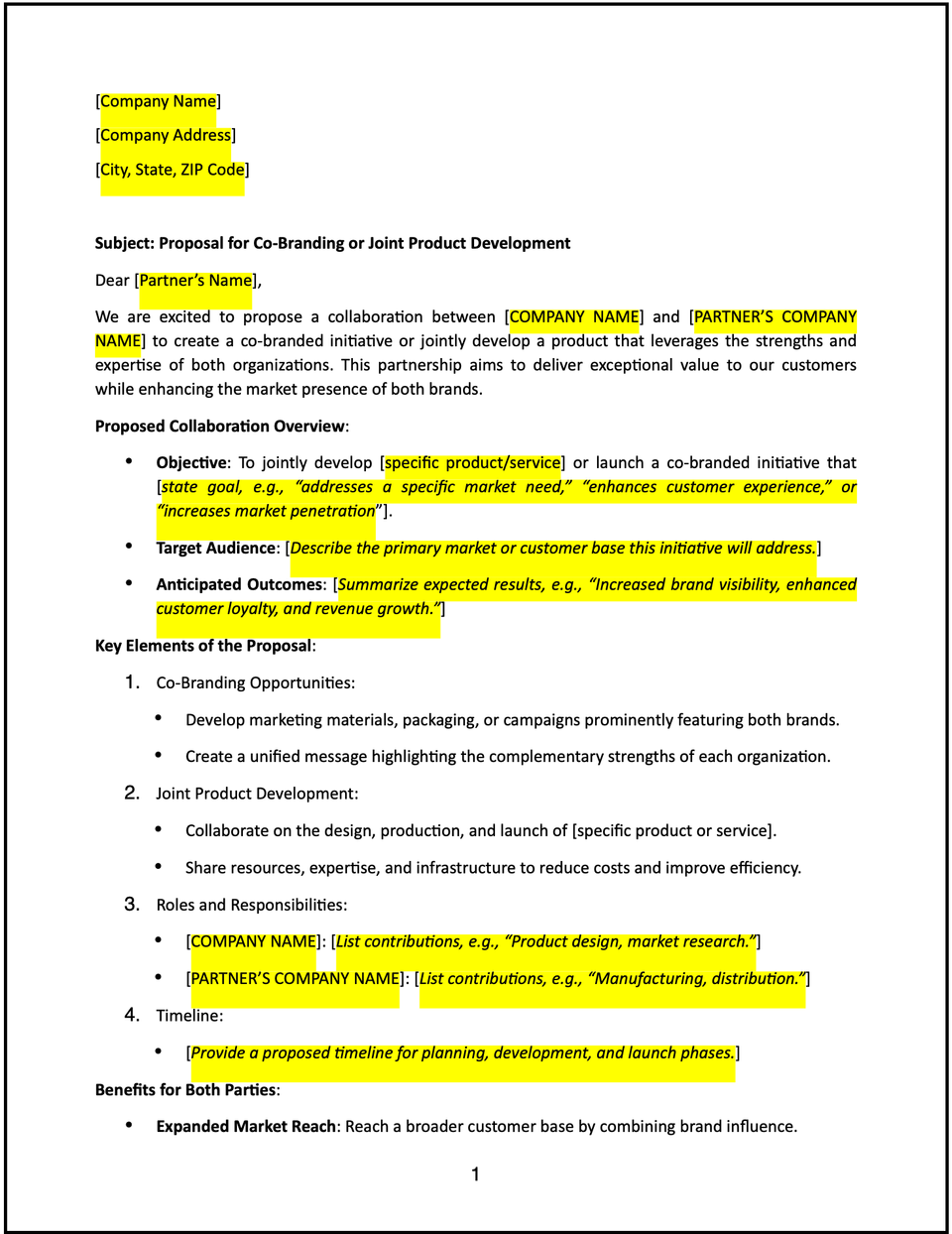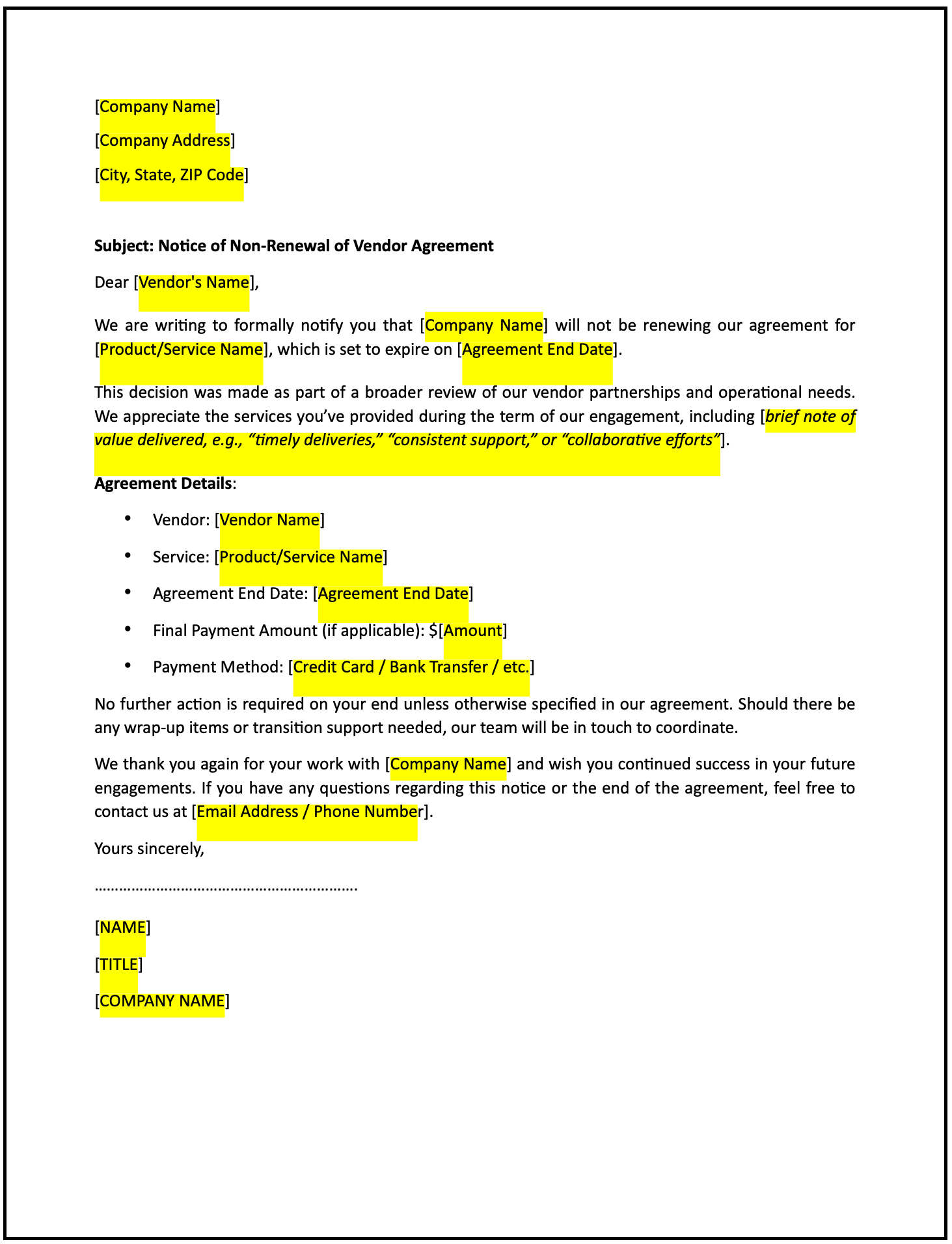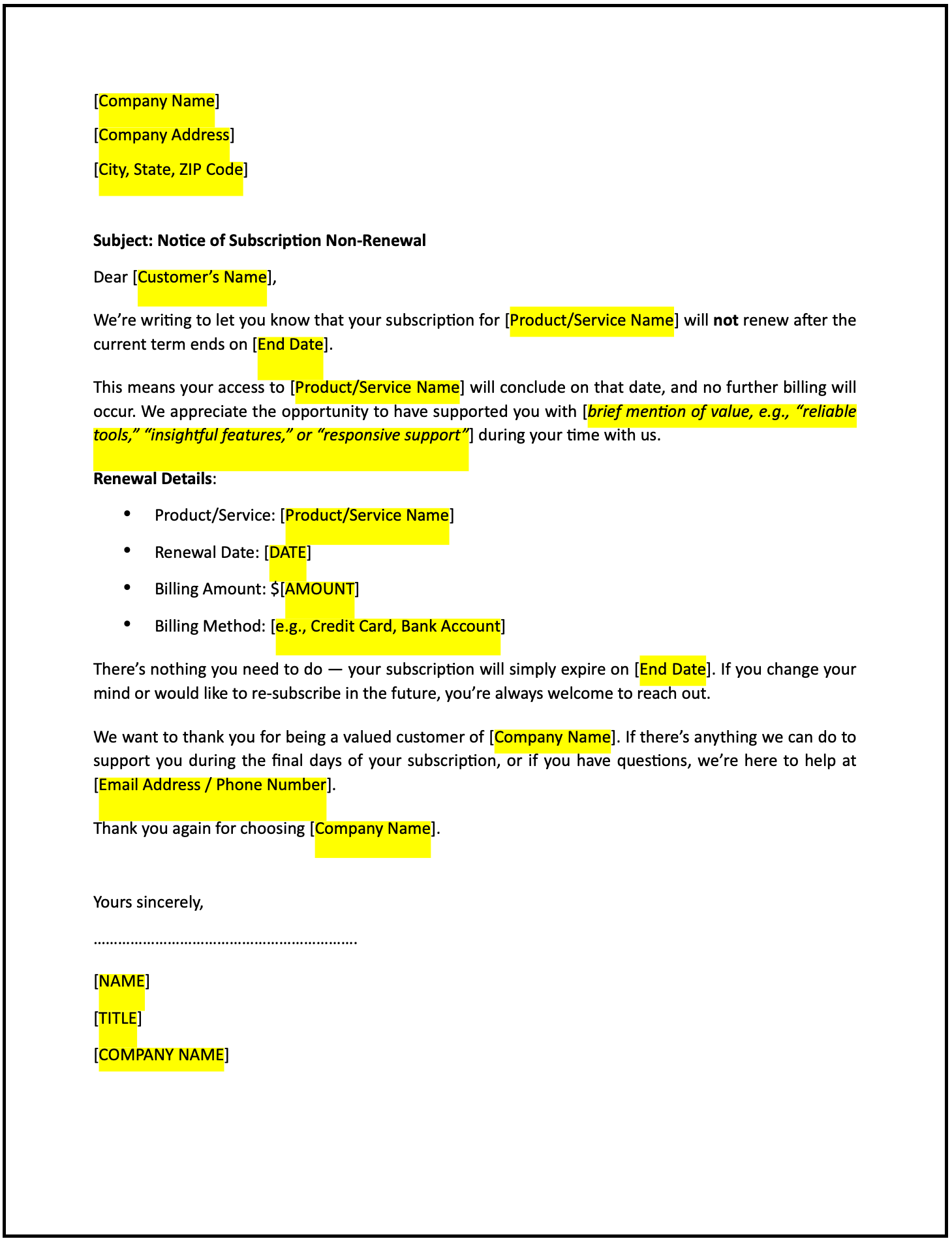Letter of proposal for co-branding or joint product development: Free template

Letter of proposal for co-branding or joint product development
A letter of proposal for co-branding or joint product development is a formal communication used to suggest a collaborative venture where two organizations partner to create a product or service that combines their strengths. This letter outlines the proposal’s objectives, potential benefits, and the steps needed to move forward.
How to use this letter of proposal for co-branding or joint product development
- Open with an introduction: Address the recipient respectfully and introduce your organization, highlighting its mission and relevant achievements.
- Highlight the opportunity: Briefly explain the rationale for the proposal, emphasizing how the collaboration aligns with shared goals and market opportunities.
- Specify the proposal: Clearly describe the scope of the co-branding or joint product development initiative, including its goals, target audience, and key deliverables.
- Emphasize mutual benefits: Highlight how both parties can benefit, such as increased market reach, shared resources, and enhanced innovation.
- Include success examples: Reference any prior successful collaborations or case studies that demonstrate the potential of the partnership.
- Share a proposed timeline: Offer a preliminary timeline for discussions, planning, and execution.
- Extend an invitation: Encourage the recipient to discuss the proposal further, share ideas, or suggest modifications.
- Maintain a professional tone: Ensure the letter is clear, respectful, and focused on fostering collaboration.
- Provide contact information: Include details for the recipient to reach out with questions or to schedule a discussion.
Benefits of using a letter of proposal for co-branding or joint product development
This letter ensures a structured and professional way to propose a partnership while fostering trust and collaboration. Here’s how it helps:
- Promotes alignment: Clearly communicating goals ensures both parties are aligned from the outset.
- Reflects professionalism: A well-crafted letter demonstrates respect and commitment to the partnership.
- Encourages innovation: Combining resources and expertise fosters creativity and new opportunities.
- Expands reach: Co-branding or joint product development broadens market appeal and audience engagement.
- Strengthens relationships: Proposing a partnership reinforces trust and long-term collaboration.
Tips for writing an effective letter of proposal for co-branding or joint product development
- Be specific: Clearly describe the initiative’s scope, goals, and expected outcomes.
- Use professional language: Maintain a respectful and engaging tone to foster trust and credibility.
- Provide context: Briefly explain how the collaboration aligns with both organizations’ goals and strengths.
- Highlight mutual benefits: Emphasize how the partnership can create value for both parties and the target audience.
- Include actionable steps: Share clear instructions for discussing the proposal or setting up a meeting.
- Keep it concise: Focus on the key points while ensuring the tone is professional and engaging.
Frequently asked questions (FAQs)
Q: What details should I include in this letter?
A: Include your organization’s introduction, the collaboration proposal, mutual benefits, and a call to action for further discussion.
Q: Should I personalize the letter?
A: Yes, addressing the recipient directly and referencing their organization demonstrates attentiveness and respect.
Q: Who typically sends this letter?
A: Business development teams, marketing leaders, or organizational representatives typically send this letter.
Q: How formal should this letter be?
A: The tone should be professional yet collaborative, focusing on building interest and alignment.
Q: When should this letter be sent?
A: Send the letter after identifying shared goals or market opportunities that make the collaboration feasible.
Q: Can this letter include visuals or mock-ups of the proposed product or branding?
A: Yes, including visuals can help the recipient better understand the potential and align with the proposal.
Q: Is acknowledgment from the recipient required?
A: While not mandatory, requesting acknowledgment ensures the recipient is aware of and considering the proposal.
This article contains general legal information and does not contain legal advice. Cobrief is not a law firm or a substitute for an attorney or law firm. The law is complex and changes often. For legal advice, please ask a lawyer.


